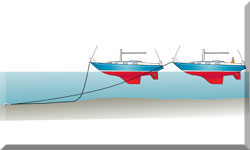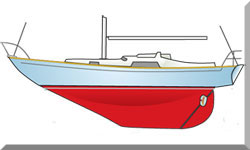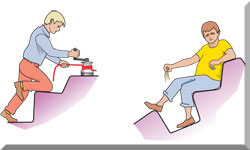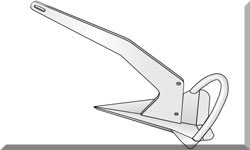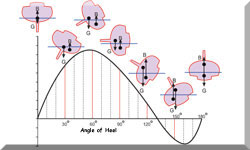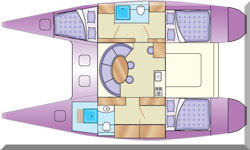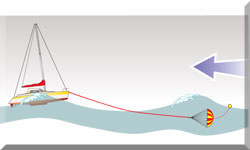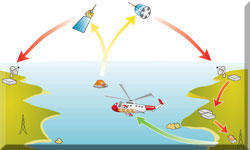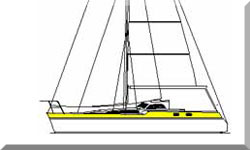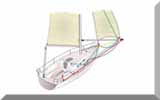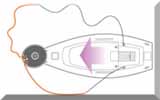- Home
- Essential Knots
A Sailor's Guide to Essential Knots & Splicing
In a Nutshell...
Knots are the silent language of the sea. For a sailor, knowing how to tie the right knot quickly and correctly is not merely a skill but a core part of seamanship, safety, and confidence.
This guide serves as your comprehensive introduction to the world of sailing knots and splicing. We'll explore the history, the anatomy of a knot, and the key categories of knots, bends, and hitches that every sailor should have in their repertoire. We'll also touch on splicing as a superior, permanent alternative for certain applications.
Table of Contents
The first time I was taught a proper Bowline, I remember thinking it was like learning a secret handshake—a small but vital piece of a larger puzzle. Over the years, I've seen how this knowledge can make the difference between an effortless maneuver and a stressful situation. My goal with this guide is to provide a solid foundation that will enable you to approach any task involving a line with competence and a deep understanding of why a specific knot is the right choice.
The Anatomy & History of a Knot
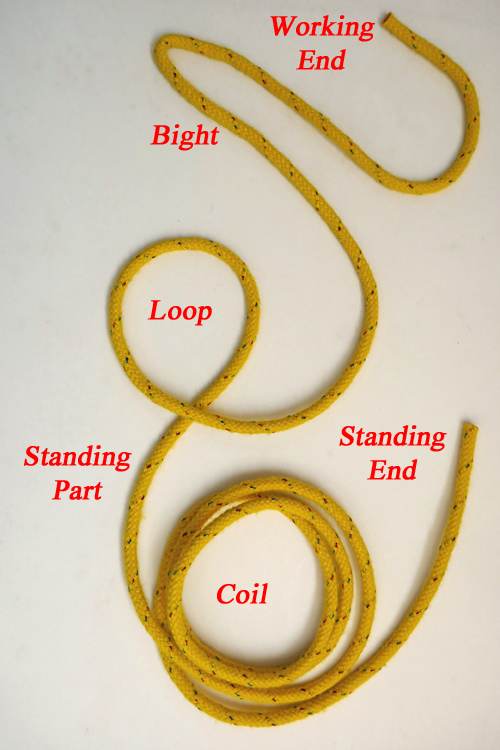
Before we dive into the knots themselves, let's understand their fundamental structure.
A rope has three key parts: the working end (the part you are actively tying with), the standing part (the long, inactive section of rope), and the bight (a simple U-shaped curve in the rope).
Understanding these terms makes following tying instructions much easier.
Knots have been used for thousands of years, with archaeological evidence of ropework dating back to ancient Egypt and China. For sailors, knots became critical for every aspect of life at sea, from raising sails to securing cargo and even for navigation.
Choosing the Right Knot for the Job
One of the most important lessons in seamanship is knowing that no single knot is perfect for every task. Knots are categorized by their function.
- Stopper Knots: Designed to prevent a rope from pulling through a block or fairlead.
- Loops: Used to create a secure, non-slip loop at the end of a line.
- Bends: Used to join two separate lines together.
- Hitches: Used to temporarily attach a line to a fixed object, like a piling, cleat, or another line.
The ability to identify the correct knot for the situation is what separates a good sailor from a great one.
Essential Sailor's Knots: Step-by-Step Guide
Here is a summary of the most important knots & splicing techniques every sailor should know. Each of these will be covered in detail in dedicated, step-by-step guides.
- Bowline: The "king of knots," this is the most essential loop knot for sailors. It forms a secure loop that won't slip but is easy to untie, even after being under load. To master this crucial skill, take a look at our detailed guide: How to Tie a Bowline: The Sailor's "King of Knots" Explained.
- Figure of 8 Knot: This is the most common and reliable stopper knot. It's simple to tie and, crucially, doesn't jam, making it easy to remove. Learn to tie it with our step-by-step guide: The Figure of 8 Knot: A Step-by-Step Stopper Knot Guide.
- Reef Knot: Used for tying two ends of a single line together, typically to secure a reefed sail. Important: Never use this knot to join two different lines or as a bend, as it can slip dangerously. You can learn the correct way to tie this knot in our dedicated article: Mastering the Reef Knot: Tying it Correctly for Sailing.
- Sheet Bend: This is the go-to knot for joining two lines, especially if they are of different diameters. You can learn how to tie this essential bend in our guide: The Sheet Bend: How to Join Two Lines of Different Sizes.
- Clove Hitch: A quick and easy way to temporarily secure a line to a piling or rail. It's best for non-critical applications. For a complete tutorial on its uses and limitations, see our guide: Mastering the Clove Hitch: Your Go-To Knot for Fenders & Mooring.
- Rolling Hitch: The perfect hitch for attaching a line to another rope, particularly when the second rope is under load. I've used this many times to create a temporary line to ease tension on a loaded halyard. You can learn how to master this versatile knot in our guide: Learn the Rolling Hitch: A Guide to Attaching Lines Under Load.
- Round Turn & Two Half-Hitches: A simple and secure hitch for tying a line to a post or ring. Its reliability makes it a mooring staple. To learn the proper technique, read our guide on How to Tie the Round Turn & Two Half-Hitches.
- Anchor Bend: The strongest, most reliable knot for attaching an anchor rode to an anchor. For a step-by-step tutorial on this critical safety knot, read our guide: The Anchor Bend: A Step-by-Step Guide for Anchoring Safely.
But for the complete rigging picture, take a look at The A-Z of Sailboat Rigging: A Guide to Standing & Running Rigging.
Splicing: The Superior Option
While knots are essential, splicing is often the superior choice for permanent line connections. A splice, when done correctly, can retain up to 95% of the line’s original strength, whereas most knots reduce a line's strength by 40-60%. Splicing a thimble into a line or creating an eye splice is a skill worth learning for any serious sailor.
Here's how to tie an eye splice in 3-strand nylon...
By Dick McClary, RYA Yachtmaster Offshore & member of the Yachting Journalists Association (YJA)
Frequently Asked Questions (FAQs)
What's the biggest mistake a beginner can make with knots?
What's the biggest mistake a beginner can make with knots?
Using the wrong knot for the job. For example, using a Reef Knot to join two lines is a common and dangerous mistake. Always choose a knot designed for the specific task at hand.
Can I use a Reef Knot to join two lines?
Can I use a Reef Knot to join two lines?
No, absolutely not. The Reef Knot is designed for tying the ends of a single line, such as when reefing a sail. It is notoriously unreliable and can slip when used to join two different lines. Use a Sheet Bend instead.
Is it okay to use a Clove Hitch for mooring?
Is it okay to use a Clove Hitch for mooring?
A Clove Hitch is quick and easy to tie, which makes it great for temporary jobs like tying on a fender. However, it can slip under a continuous load or if the line is not under tension. For mooring, the Round Turn & Two Half-Hitches is a far more secure and reliable option that is still easy to tie and untie.
What is a stopper knot and why is it important?
What is a stopper knot and why is it important?
A stopper knot is tied at the end of a line to prevent it from running through a block, fairlead, or other fitting. The Figure of 8 Knot is the most common stopper knot. Without one, a halyard or sheet could accidentally "sky" (get pulled all the way through the mast or rigging), creating a significant headache to retrieve.
Sources
RYA Knots, Splices & Ropework Handbook: A complete guide to knots, splices, and rope care from the Royal Yachting Association. https://www.rya.org.uk/shop/g63-knots-splices-and-ropework-handbook
Animated Knots by Grog: An excellent online tool for visualizing how to tie a wide variety of knots with step-by-step animations. https://www.animatedknots.com/
UKSA Sailing Knots Guide: A useful beginner's guide to essential sailing knots from the United Kingdom Sailing Academy. https://uksa.org/sailing-knots-for-beginners-guide/
American Sailing Knots Made Easy: Video tutorials and explanations of key knots for recreational sailors. https://americansailing.com/learn-to-sail/videos/knots-made-easy/
Recent Articles
-
Hans Christian 43: Classic Bluewater Cruiser & Liveaboard Sailboat
Dec 10, 25 04:37 AM
Explore the Hans Christian 43: a legendary heavy-displacement, long-keel sailboat. Read our in-depth review of its specs, design ratios, and suitability for offshore cruising and living aboard. -
Planning Your Sailboat Liveaboard Lifestyle: An Ocean Sailor's Guide
Dec 06, 25 05:18 AM
Seasoned sailors share their methodical risk analysis for planning a secure Sailboat Liveaboard Lifestyle, covering financial, property, and relationship risks. -
Marine Cabin Heaters: The Expert’s Guide to Comfort & Safety at Sea
Dec 05, 25 06:52 AM
Choose the best Marine Cabin Heaters for your vessel. Expert advice on diesel, paraffin, and hot water systems for year-round cruising comfort.

